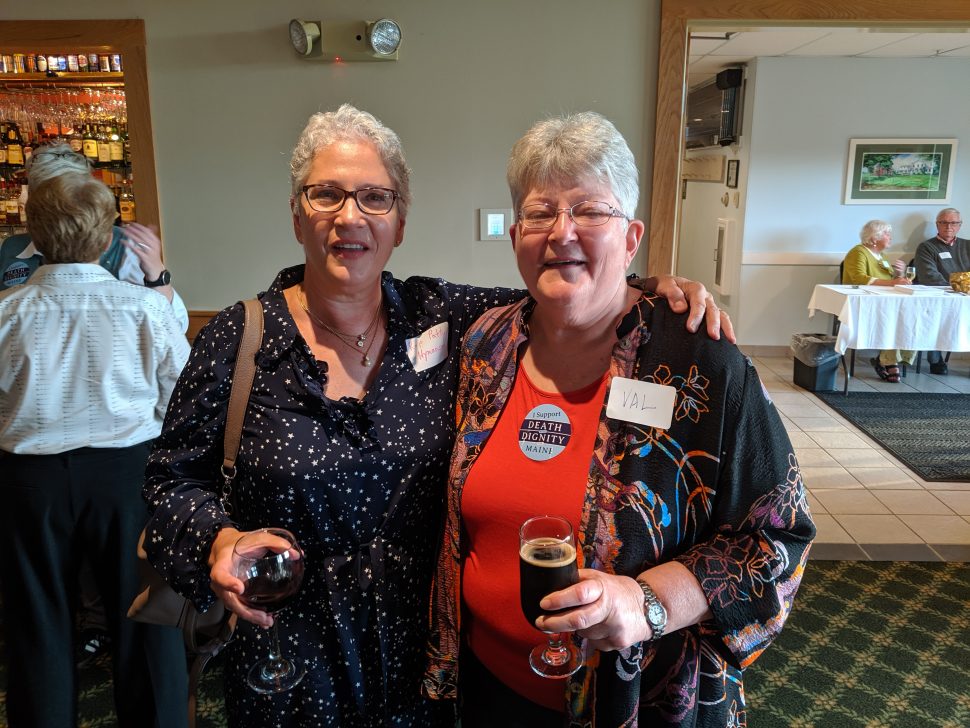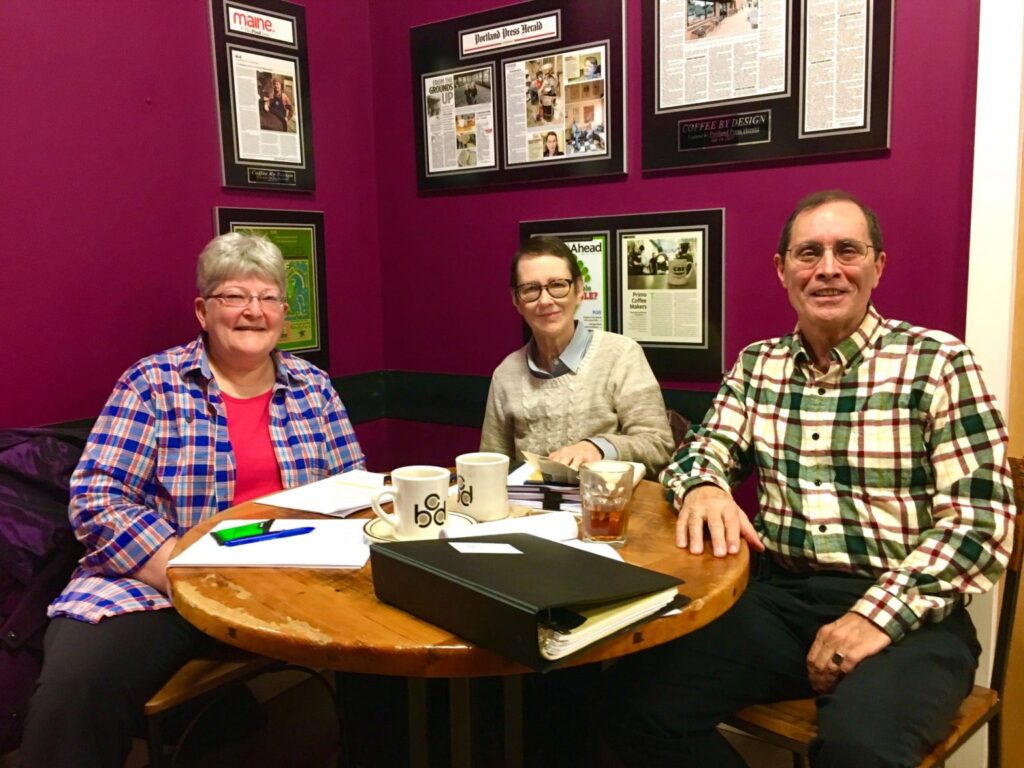It’s likely we all experienced some form of loss this year: cherished gatherings and celebrations canceled, graduations deferred, and, tragically, loved ones gone too soon. Yet in the midst of grief, there were moments of hope and accomplishments worth celebrating.
In this Year in Review, we recap our legislative efforts, commemorate significant anniversaries, spotlight new tools for advocacy and end-of-life planning, and share reflections from scholars, writers, and medical professionals on the ways COVID-19 has forever changed the conversation around death and dying.
We celebrated one year of implementation in Maine.
September 19, 2020 marked one year since the Maine Death with Dignity Act went into effect and implementation of the law began. Many years of grassroots organizing and legislative partnerships paved the way for passage of the law. But the success of implementation thus far has been made possible by the willingness of patients and healthcare providers to navigate a new process. Read our anniversary article to learn the inside story of how two decades of dedicated efforts by advocates and our organization led to a landmark victory, and what the future holds for death with dignity in the Pine Tree State.

We made history in Massachusetts.
In May, a death with dignity bill advanced out of committee in the Massachusetts Legislature for the first time in history. Numerous newspapers and media outlets across the state published op-eds and letters to the editor from passionate advocates, and the state’s paper of record, the Boston Globe, editorialized in favor of the bill. The Legislature will make a final decision on whether to advance the bill by December 31.
This monumental progress is only possible because of supporters like you, who believe in the power of our movement and step up to contribute. You helped us build momentum, break through the noise, and provide vital educational resources to the public when it mattered most. Can we count on you to support our work in 2021 and beyond?
We ran robust campaigns in Maryland and New York.
Before COVID-19 led many legislatures to suspend their activities last spring, we doubled down on our campaign activities in Maryland and New York.
In Maryland, Death with Dignity Executive Director Peg Sandeen delivered remarks at a January press conference, joining leaders of like-minded organizations in urging legislators to pass an aid-in-dying bill under consideration. In February, Sandeen testified at a hearing for the bill, and we released the results of a poll we commissioned showing widespread support for death with dignity across the political spectrum and demographic groups.
We launched a digital advocacy campaign in New York in January centered on a video featuring Jonathan Partridge, an activist who advocates in honor of his mother, Marcia Partridge, who died after battling several forms of cancer and a serious autoimmune disorder in 2018. Together with our partner organizations in the New York Alliance for Medical Aid in Dying, we are laying the groundwork for an aggressive campaign to pass a law in 2021.
We made inroads in New Hampshire.
After working with advocates to launch a new grassroots organization, New Hampshire Death with Dignity, in 2019, we joined them at a February hearing on House Bill 1659, the New Hampshire Death with Dignity Act. The New Hampshire group is poised for success in 2021 with dedicated and savvy leaders who are developing a multi-year campaign to pass a law.

We provided fiscal sponsorship for a first-of-its kind clinicians conference.
Last February, the National Clinicians Conference on Medical Aid in Dying brought together more than 200 physicians, pharmacists, hospice workers, nurses, medical ethicists, social workers, members of the clergy, and others doing work connected to death with dignity. Attendees explored best practices for supporting patients who wish to access a death with dignity law. They gained both practical knowledge and a network of professional contacts who can provide ongoing support and insights.
The most significant development at the conference was the establishment of the American Clinicians Academy on Medical Aid in Dying. The group will continue the work begun at the conference, described in an official statement from the Academy as “informing and educating clinicians about medical aid in dying, from clinical discussions to evidence-based knowledge, from nursing care to the work of volunteers at the bedside, from medical ethics to pharmacology, and more.”
We are proud to be the fiscal agent of this groundbreaking conference, and will continue to support the innovative work of the Clinicians Academy.
We launched our SouthWest Strategy campaign.
We think we’ve become pretty good at knowing when states are ready to pass aid-in-dying laws. That’s why in September of this year we launched our SouthWest Strategy campaign: a coordinated effort to secure passage of medical aid in dying legislation in Arizona, Nevada, and New Mexico. Working closely with our grassroots and national partners at New Mexico End-of-Life Options Coalition and Arizona End of Life Options, and building a network of supporters, we’ve put together a powerful plan for success in the region.

We created new tools for advocacy and end-of-life planning during a pandemic.
When the COVID-19 pandemic upended legislatures across the nation, we pivoted to create new resources in response to inquiries about end-of-life planning. Our new Life File toolkit is a free, comprehensive library of resources designed to help people tackle the “what and how” elements of end–of–life planning—and give loved ones guidance about how to honor their life and their legacy. Additionally, we shared insights and vital information from experts in the field of end-of-life care, who provided answers to frequently asked questions about the impact of COVID-19 on end-of-life care and advance directives. And we published an article on dying and grieving during a pandemic, featuring moving reflections from individuals who specialize in issues related to death and dying.
We also created powerful, user-friendly digital tools to give aspiring advocates the resources they need to succeed in pandemic times. Visit our online Action Center and State Statute Navigator to explore how we’ve distilled the essentials of advocacy into tools you can use to take action, whether you have 10 minutes, 10 hours, or even more time to spare.
Moving forward
This year hasn’t been easy, but we have reason to be optimistic heading into 2021. Momentum is on our side in key states, and we have plans for long-term success in others. With your help, we can lay the foundation for policy change across the country while continuing our work to ensure people have the information and tools they need to plan their end-of-life care.
We are grateful for everyone who supported and sustained Death with Dignity in 2020, and look forward to sharing updates on our progress next year.